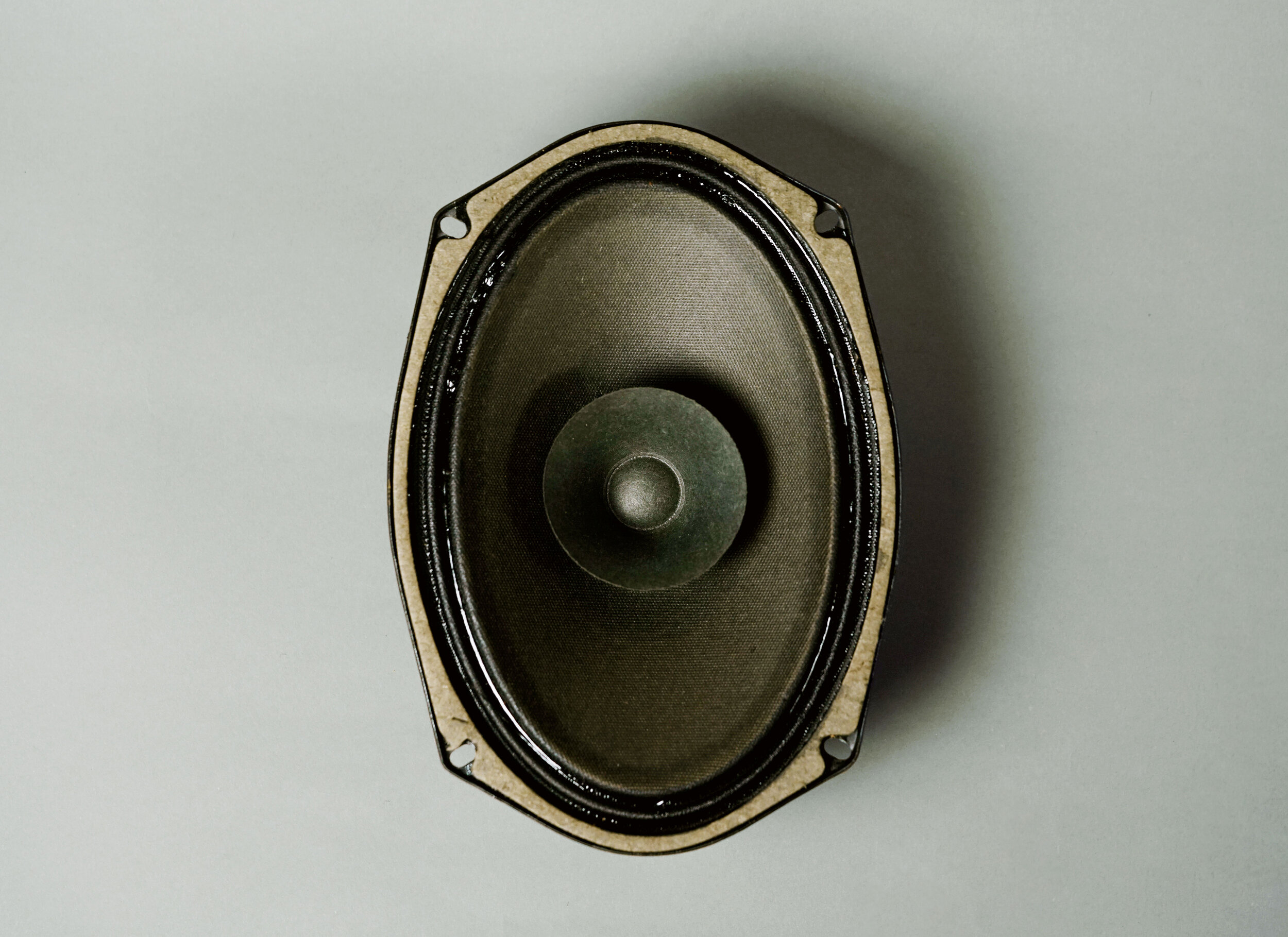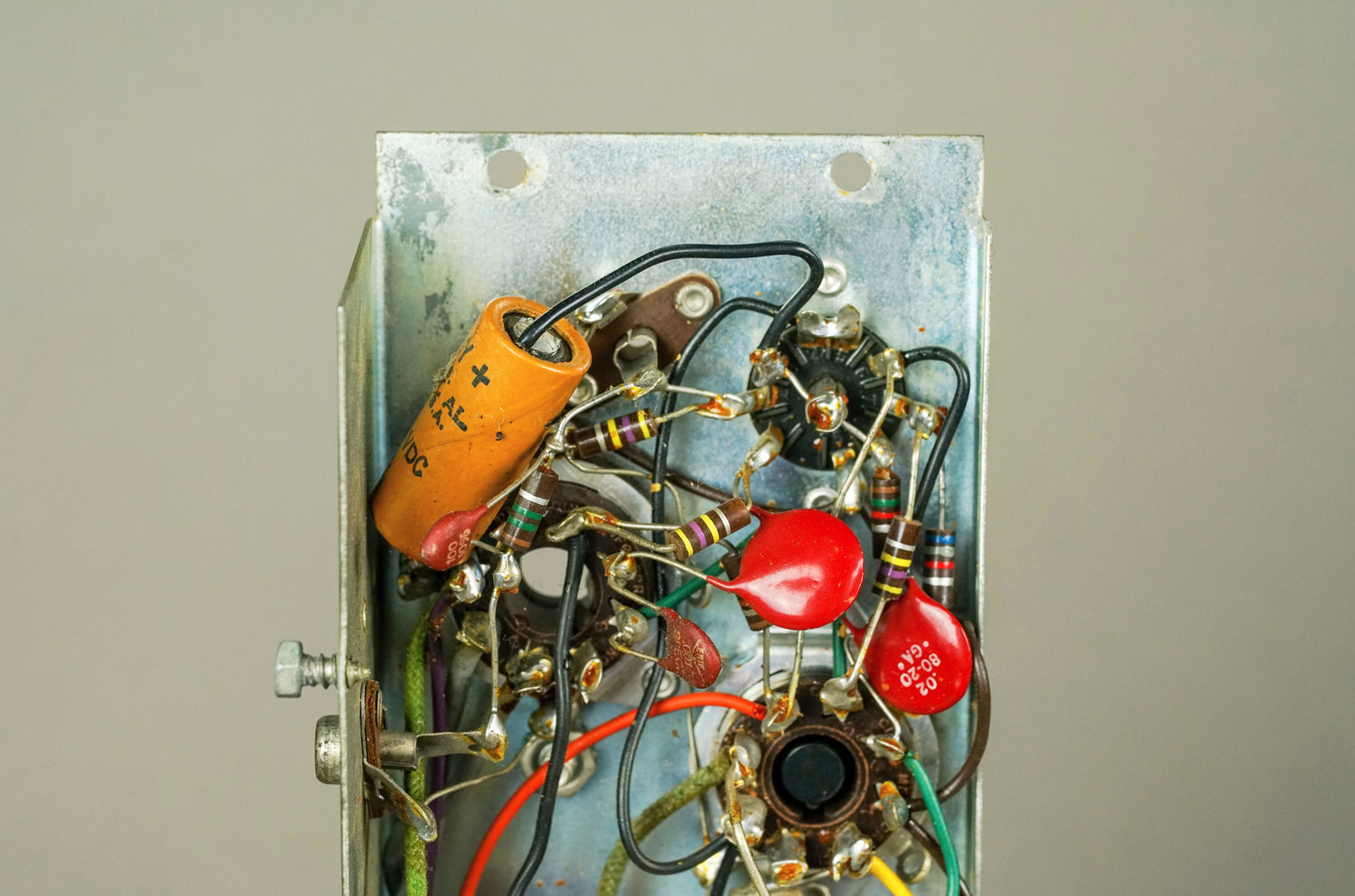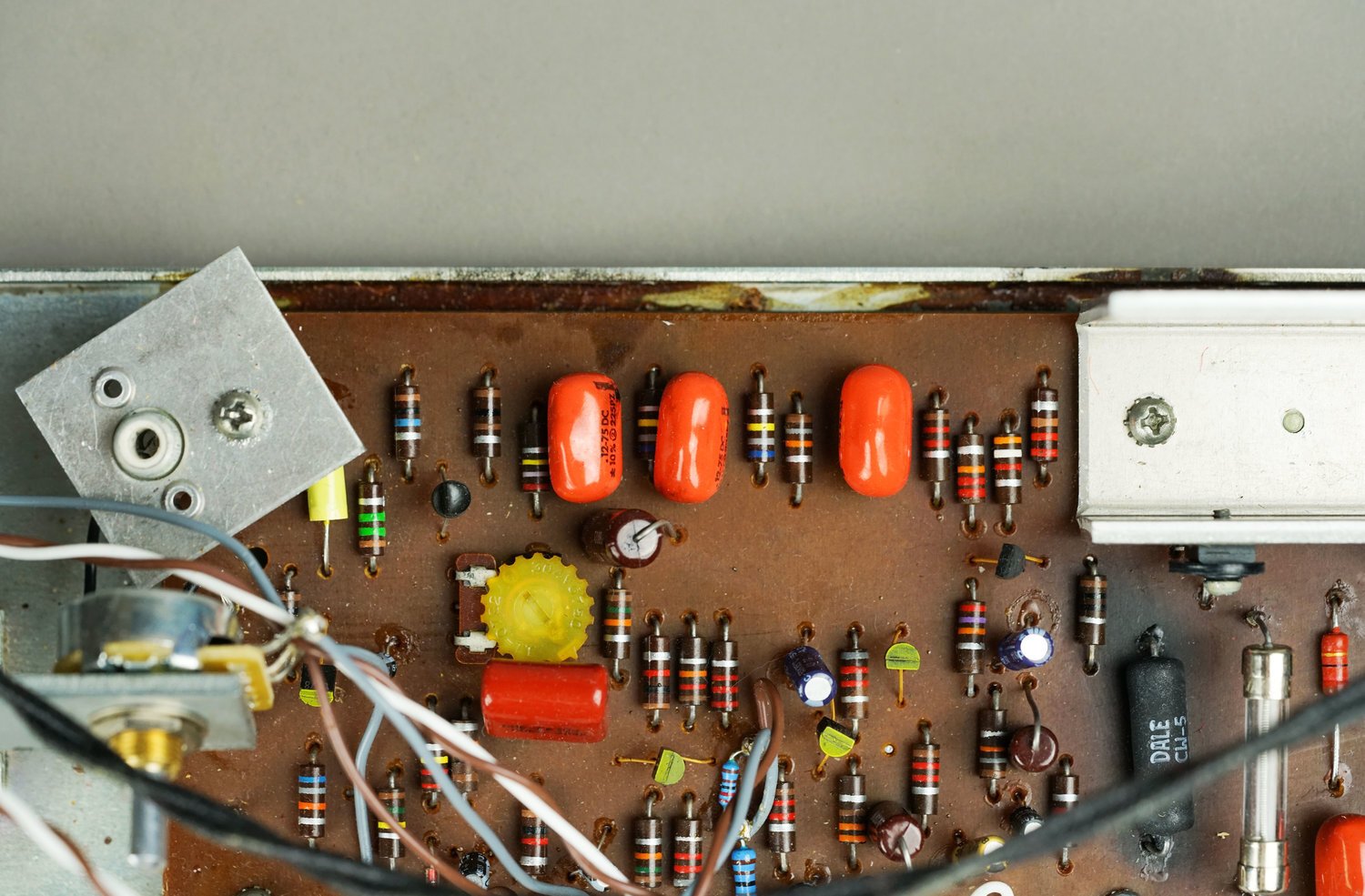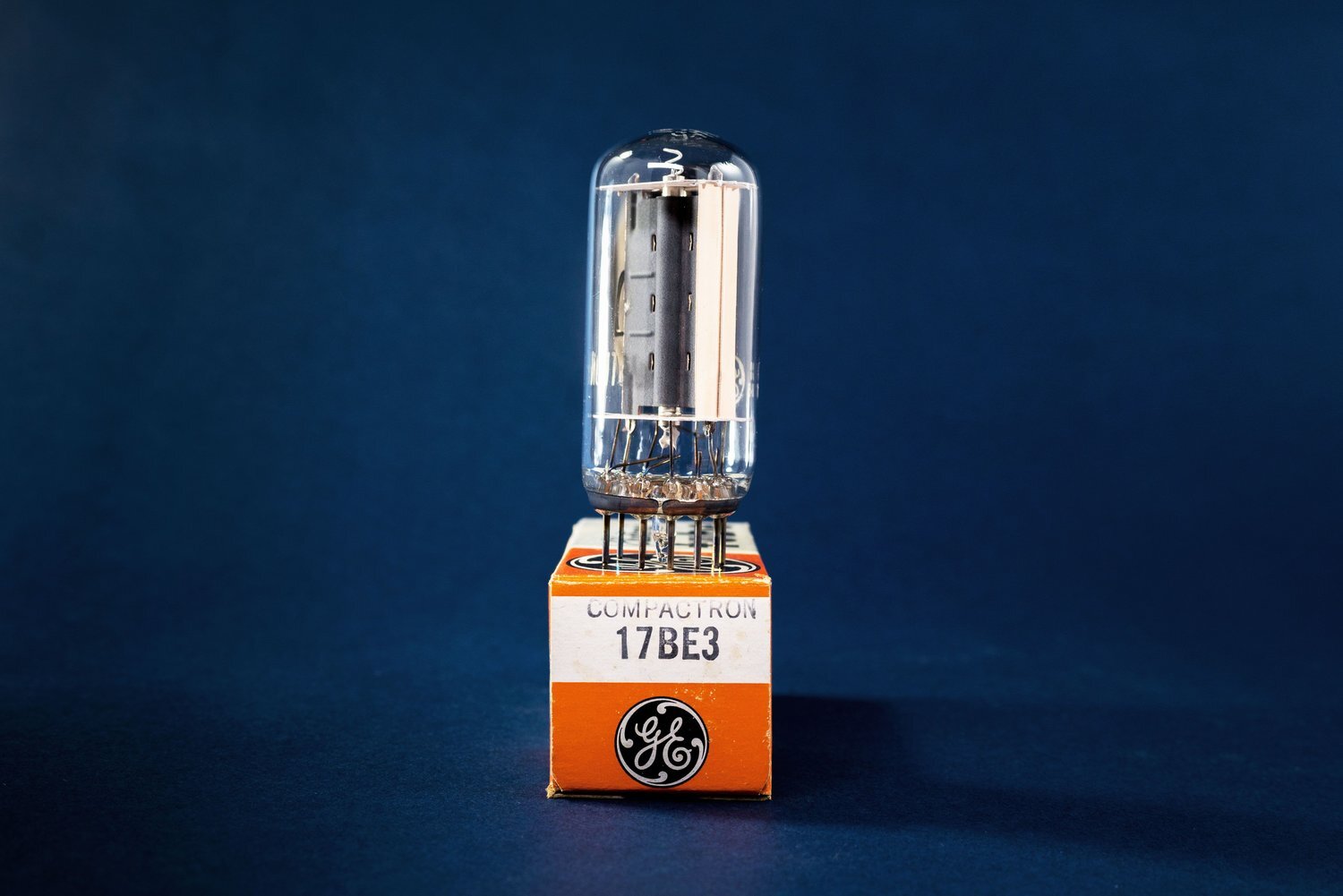On Speaker Impedance
All speakers have an impedance, usually 4 Ω, 8 Ω, or 16 Ω. For the best performance, you should match the impedance of your speakers to the output impedance of your amplifier. When the impedances match, the amp achieves the most efficient power transfer between the speaker and the amplifier. Power transfer, expressed in watts, affects the volume, drive, and overall sound quality of the amplifier.
If you match the speaker impedance to the amp’s output impedance, the amp will comfortably supply enough current to drive the speaker as designed. In turn, the speaker will reproduce the full signal with a minimum of power loss or distortion. If you use a higher-impedance speaker, the amplifier transfers less power to the speaker and its overall output (expressed in wattage) is diminished. If you use a low-impedance speaker, the amplifier transfers more power to the speaker — potentially more power than the amplifier can handle.
If you are reading this, you may be asking: Do I have to match my speaker impedance to my output transformer?
The answer depends on what amplifier you are using, how big of a mismatch you’re planning, and a lot of other variables. Matching the impedance of your speaker to your output transformer helps your amplifier happily work to its full potential. However, we all live in the real world, where speakers don’t grow on trees. Understanding speaker impedance will help you determine how risky the mismatch is, and whether it is a level of risk that you feel comfortable with.
For information specifically on the speaker impedances of 100-series Wurlitzer electronic pianos, read our article here.
The consequence of using a higher-impedance speaker is that the amp achieves somewhat reduced power transfer, which has implications for its general sound quality. If the speaker’s impedance is much higher, it will affect the balance of the output transformer, reducing the OT’s primary impedance to the point where the output tubes will behave as if there is no load attached. This can destroy the power tubes or output transformer. The consequence of using a lower-impedance speaker is that the amp will start passing too much current. You may hear distortion, and, if the impedance mismatch is extreme, it can also destroy the power tubes or output transformer.
The smaller the mismatch, the safer it is. Doubling or halving the impedance should be fine, but going outside of that is risky. The risk also depends on the condition of your amplifier. If it is old and already pretty deteriorated, the minor stress of an impedance mismatch might be enough to push your tubes or transformer over the edge.
Things start to get really complicated when you connect multiple speakers to an amplifier. This is where you need to be careful so that you do not inadvertently connect too little impedance to the amp. When you connect two or more speakers, the total impedance is either:
the sum of every speaker’s impedance, when you connect them in series; or
a number that is somewhat less than the impedance of the lowest-impedance speaker, when you connect them in parallel
The number in 2 is achieved by calculating 1 / [ (1/z₁) + (1\z₂) + (1/z₃) + … ], where z₁ is the impedance of the first speaker, z₂ is the impedance of the second speaker, etc., continuing for all the speakers in your parallel connection. However, there is a shortcut for calculating two parallel speakers of the same impedance. The final impedance is one-half of the impedance in question. So, two 8 Ω speakers in parallel are 4 Ω. Two 4 Ω speakers in parallel are 2 Ω. Four 4 Ω speakers in parallel are 1 Ω (two 4 Ω speakers are 2 Ω, and half of 2 is 1 Ω).
If the speakers do not have the same impedance, you must use the formula to calculate the total impedance. For instance, one 8 Ω and one 4 Ω speaker in parallel have a total impedance of 2.67 Ω. This is a low impedance that could potentially stress the amplifier circuit.
How Speaker Impedance Works
What is impedance? Like resistance, impedance is a measure of how much a circuit opposes the flow of current. For AC signals (such as an audio signal), resistance is a useful measurement but it doesn’t tell the whole story. This is because, unlike DC signals, AC signals have phase as well as magnitude. Phase is how you describe the angle of a waveform mathematically: in other words, phase is the measurement of how the AC current alternates between the peaks and valleys of its waveform. A DC current flows in one direction; it has no phase. For that reason, the impedance of a DC current can be considered the same as its resistance. But, to describe an AC signal, you need to account for both its resistance and its reactance (which is a type of resistance that encompasses capacitance and inductance). Resistance and reactance combined are described as impedance.
Why is speaker impedance important? In the context of speakers, impedance represents how much the speaker resists the current that the amplifier is presenting to it. The lower the speaker impedance, the less the speaker resists current. The less the speaker resists current, the harder the amplifier works to provide it with a constant stream of current.
Consider a water pipe. If the pipe is big, a greater volume of water can flow through it. If the pipe is small, less water can flow through it. But where is the water coming from? It’s being pumped out of your amplifier, and your amp is going to work really hard to generate the water pressure you need to fill up that pipe, regardless of whether it is big or small. So, if you choose a low impedance (aka large pipe) speaker, you need to be sure that the amp is capable of safely pumping enough water to fill it up. Otherwise, the amp (or the speaker) will eventually overload and fail.
On the same token, you want your amplifier to produce all the volume and tone that it is capable of. So, if you choose a speaker with an impedance that is too high for your amplifier, the whole system is underachieving. You still don’t have the most efficient power transfer between the amp and the speaker, and it may not be outputting quality sound to its highest potential. Furthermore, a very high impedance will affect the characteristics of the output transformer. This might trick the power tubes into thinking that there is no speaker connected at all, also causing the amp to fail.
Since impedance changes with frequency, the listed impedance of a speaker is actually its “nominal impedance.” The nominal impedance is an approximation of the lowest impedance that the speaker presents. In practice, the nominal impedance helps you choose the correct speaker for your real-world application. However, when thinking about the concept of impedance you should keep its variability in mind. This is particularly true when you are calculating speakers in parallel and weighing options that are only within a few tenths of each other.
How the Output Transformer Interacts with the Speaker
A vacuum tube typically has a high impedance output in the thousands of ohms. This is not appropriate for driving a speaker, which usually have nominal impedances between 4 Ω and 16 Ω. Also, tubes are powered by high DC voltages, often in the neighborhood of 400v. This voltage needs to be removed from the signal before it reaches the speaker.
Output transformers on two Wurlitzer 700 amplifiers. The extension speaker output is the bottommost output.
The output transformer is composed of two coils of wire. Each coil is wrapped around a magnetic core, but they are not otherwise physically connected. When one side (the primary) receives a voltage, the core’s magnetic field induces a voltage in the other coil of wire (the secondary). This voltage can be larger or smaller than the original voltage depending on the turns ratio of the transformer coils (i.e., the number of times each wire is wrapped around the core). However, the power transferred from one coil to the other is the same. This is because, if the turns ratio reduces the voltage on the secondary, the current will increase correspondingly, and vice versa. (Because real materials are flawed, sometimes a little bit of the transferred power is lost to heat. This is also why you should never de-rust your transformers.)
So, power tubes send a high-impedance, high-voltage, low-current signal to the output transformer primary. It appears on the secondary as a low-impedance, low-voltage, high-current signal. Since a transformer can only pass AC signals, the DC power supply voltage is eliminated from the final audio signal.
Matching the load (speaker) impedance to the impedance of the output transformer’s secondary ensures that the amplifier will transfer signal to the speaker as efficiently as possible. The output transformer is chosen in order to facilitate a certain amount of current flow — or, to return to our water analogy, pump a certain volume of water. When you connect a speaker of the same impedance, you are connecting a pipe that is the ideal diameter to handle that volume of water.
Why 4 Ω Impedance is Historically Considered “Hi-Fi”
The lower the impedance of the speaker, the more power it can receive from the amplifier. For a lot of people, more is more. So, historically, 4 Ω has been the gold standard of speaker impedance. Connecting a 4 Ω speaker allows a very high power transfer between the amp and the speaker, because 4 Ω poses very little resistance to current. (Lower impedances, of course, invite even more power transfer, but as you dip below 4 Ω you start flying very close to the sun.) For this reason, many people consider a 4 Ω speaker impedance to promote the most accurate, lively, “hi-fi” sound quality.
However, a 4 Ω speaker requires an amplifier that is robust enough to handle all the current that the speaker draws. When tube audio was more common, a 4 Ω speaker output was the mark of a more powerful amplifier. It communicated that the amplifier produced a lot of good, quality signal, and the circuit was specifically optimized to deliver the entirety of this signal to the speaker. Requiring an 8 Ω speaker hinted that the amplifier was less powerful, because higher impedances are less taxing on circuit components.
Today, we have lost the popular association between 4 Ω and good audio. This is another casualty of solid state circuits. Solid state output circuits are already low-impedance, high-current circuits, so they can be connected directly to a speaker, without requiring an output transformer to mediate. Solid state amplifiers typically have a “minimum” impedance (usually 4 ohms), because there are fewer audible consequences to an impedance mismatch. Since solid state amplifiers are much more common than tube amps, and speaker impedance isn’t important to a solid state circuit, the status of 4 Ω speakers has become somewhat irrelevant to most amplifiers.
And, as time passes, 8 Ω speakers have become much more common. They can be used in more amplifiers, and they can be combined with other impedances to form more useful parallel configurations. Eight ohm speakers are very practical, and still a very low impedance in the grand scheme of things.
Wurlitzer always prioritized clean tone, because they wanted the electronic piano to sound similar to a conventional piano. Every tonal decision they made was to maximize realism and convince people that yes, this is a good substitute for that piano you can’t afford. (Even tremolo: Wurlitzer didn’t want it because it’s a cool effect, but because they thought it could emulate the sound of a bass viola or a celeste.)
In Wurlitzer amplifiers, all design decisions promote undistorted audio. Hence, the 12AU7 preamp tubes in the 112 and the 7868 (i.e., “hi-fi”) power tubes in the 145. Sheer power was never a priority: both the 112 and 145 are conservatively designed (as is the 120, its hot output tube bias notwithstanding). The 112 service manual brags about this, claiming that the “electrical design” of the volume control ensures that “amplifier characteristics are maintained at various volume levels,” which is confusing since you would be hard-pressed to find a more conventional volume topology. Anyway! The point is that Wurlitzer designed did not design a 4 Ω speaker tap because it had any particular commitment to efficient power transfer. Instead, it was a message indicating to consumers that Wurlitzer electronic pianos were top-quality instruments with high-performance amplifiers, and absolutely worth buying.
Further Reading
Browse all of our articles on restoring vintage gear. Or, click on an image below.







